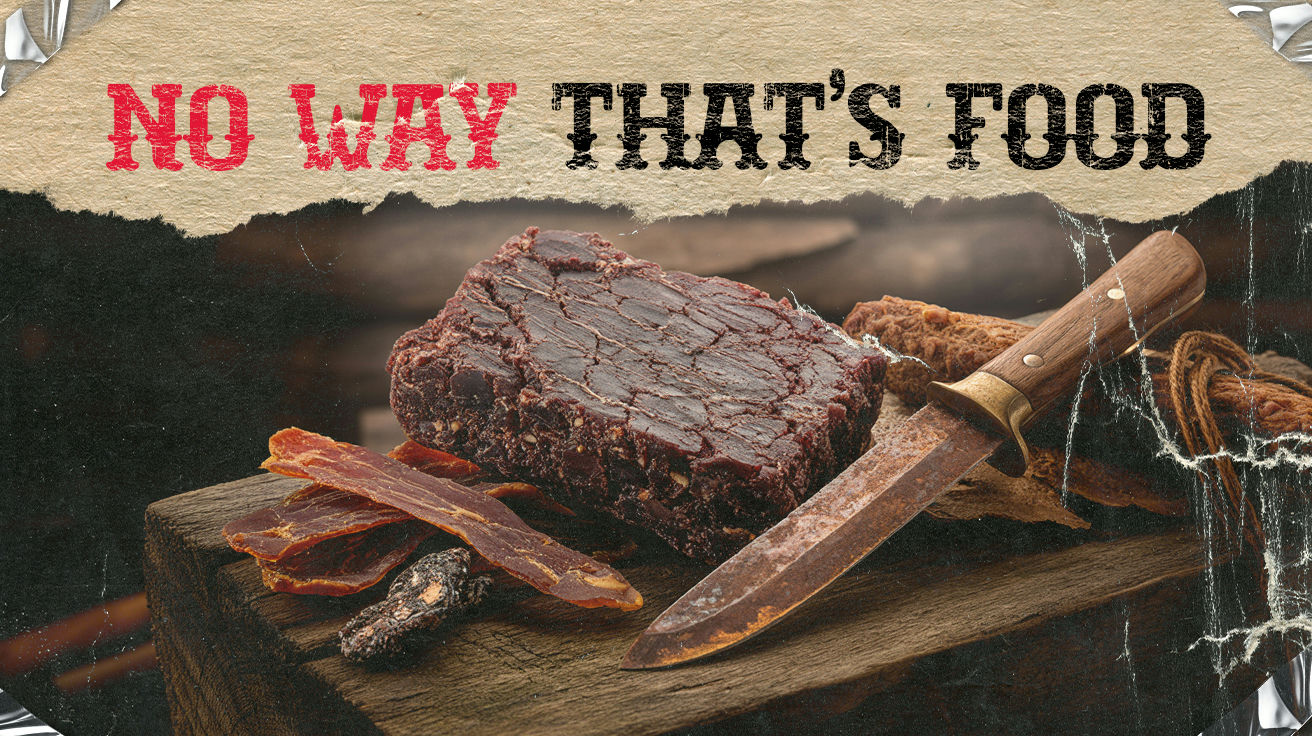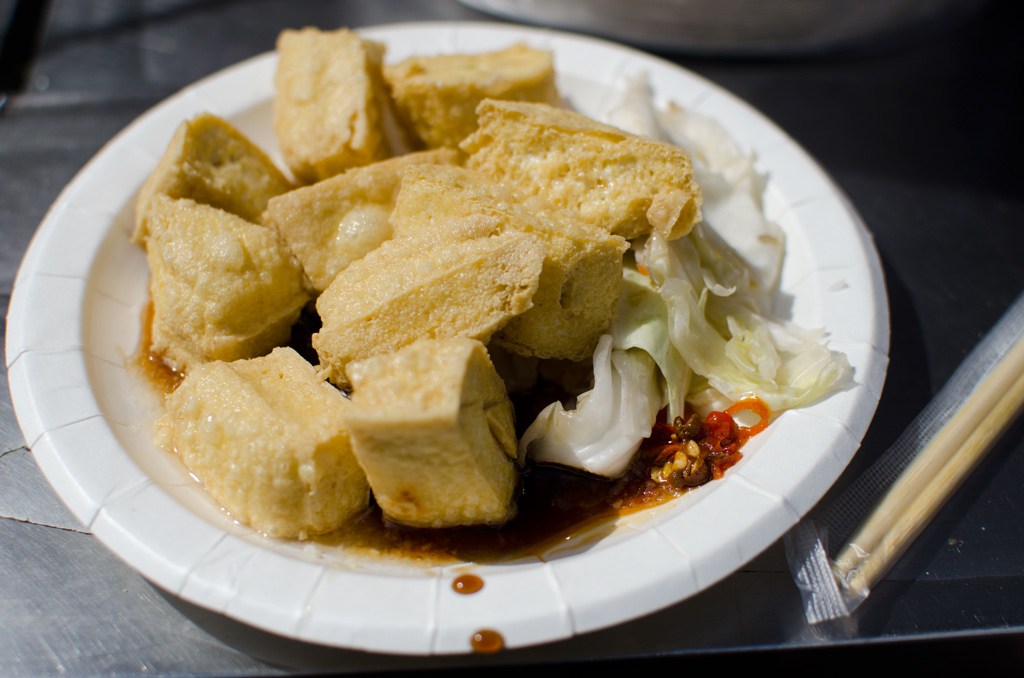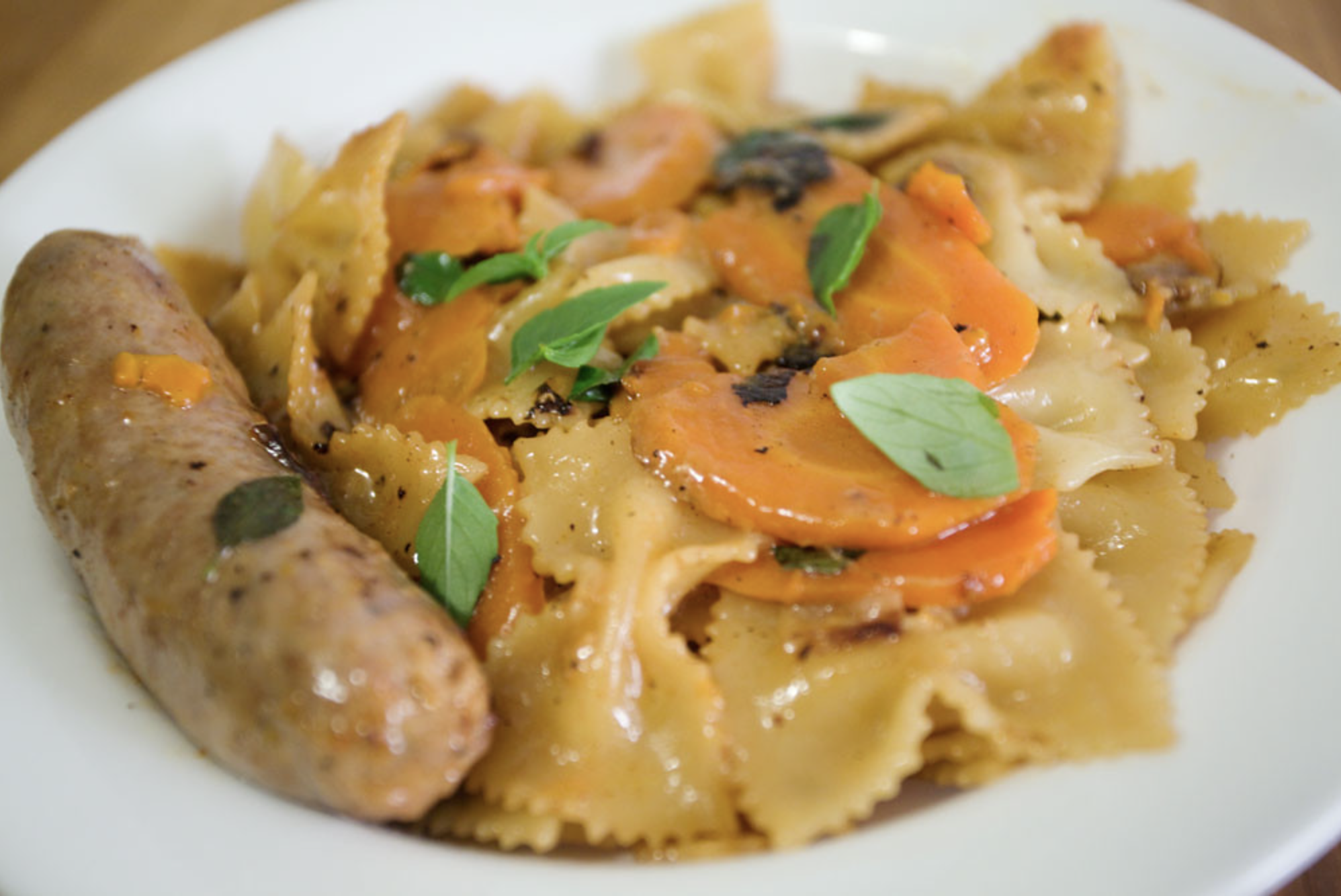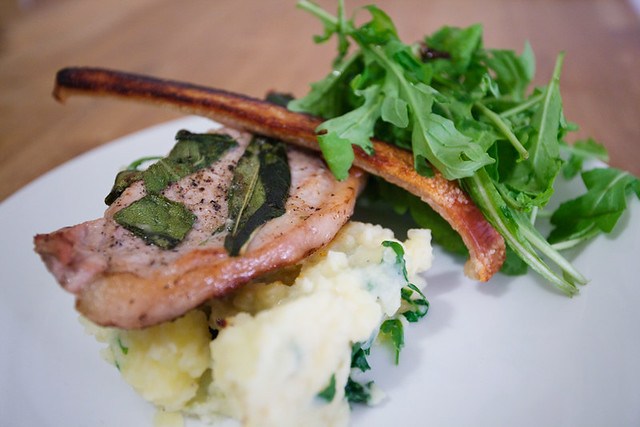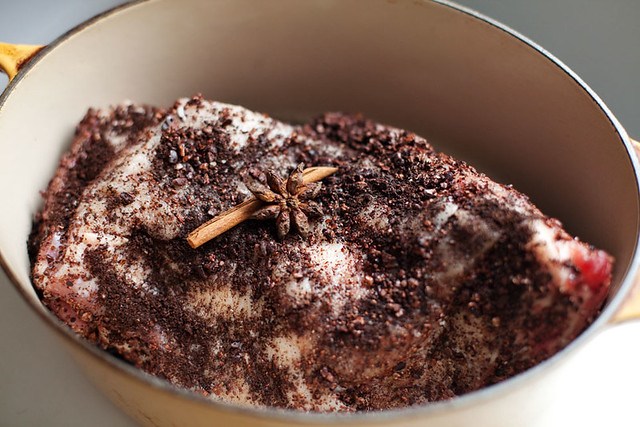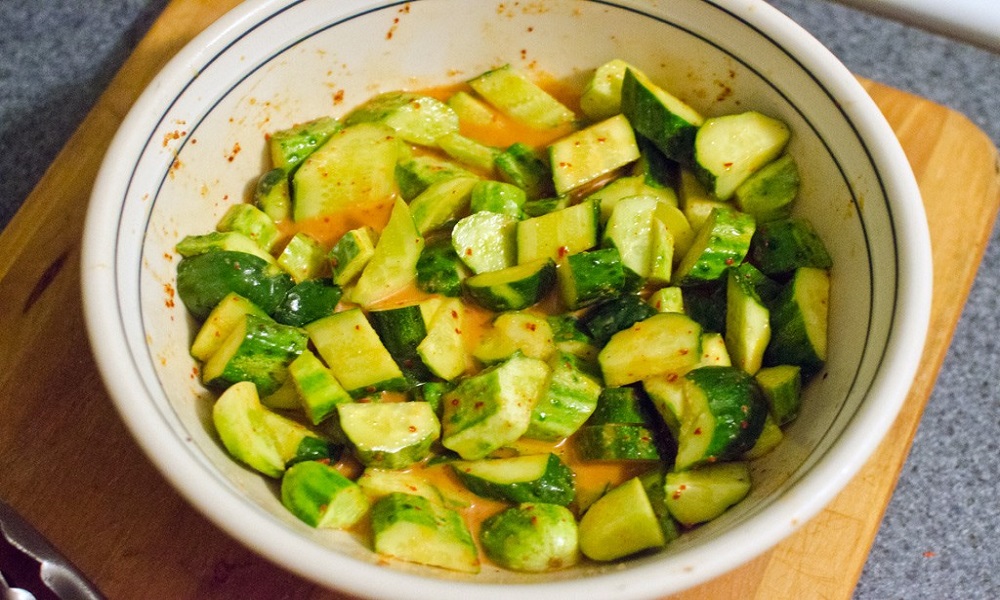The rugged landscape of the Wild West shaped a culinary tradition less about Instagram-worthy plating and more about not dying before sunrise. Meals weren’t just sustenance—they were community gatherings where stories flowed as freely as the coffee. Pioneer ingenuity transformed meager ingredients into dishes that stuck to your ribs like memories you can’t shake. These forgotten recipes tell stories of hardship and adaptation that are different than our modern food-delivery apps. Each dish represents a chapter in western expansion written in grease stains and wood smoke, capturing the soul of people who built America one calloused hand at a time.
11. Pemmican

Native Americans created this ultimate survival food that makes modern energy bars look like amateur hour. Dried buffalo meat, rendered fat, and berries combined into dense cakes that lasted years without spoiling, surviving conditions that would destroy most modern preserved foods. A single pound contained the nutrition of several pounds of fresh food—the original meal prep for people who couldn’t afford to go hungry.
Despite being hard to digest and monotonous enough to make you hallucinate variety, pemmican enabled long journeys through terrain that offered no guarantees. Fur traders and explorers relied on its concentrated energy to venture into landscapes where uncertainty was the only certainty. Few foods have played such a crucial role in Western expansion.
10. Spotted Dog

This simple pudding brought joy amid conditions that would break most modern spirits. Suet, flour, and dried fruit formed a boiled dumpling speckled with raisins or currants like stars in a doughy night sky. Wrapped in cloth and boiled, it emerged as a welcome treat that turned basic ingredients into a pure celebration.
The dense dessert provided sweetness, vitamins, and satisfying fat content when all three were precious commodities. Sailors and settlers alike anticipated this simple pleasure that marked special occasions or unexpected windfalls. Spotted Dog shows how basic ingredients could create moments of happiness during difficult times when joy itself was a resource worth preserving.
9. Railroad Spike Jerky

Workers building the transcontinental railroad needed food as tough and enduring as they were. Beef cut along the grain received a simple rub of salt and pepper before time and desert air worked their ancient magic. The strips hung on improvised racks made from actual railroad spikes, drying in the desert sun like leather flags of sustenance.
After two or three days, the jerky developed a shelf life that would make modern preservatives jealous. Workers carried this lightweight protein in pockets during shifts that would violate every modern labor law. This practical preservation method helped fuel one of America’s greatest engineering achievements, one chewy bite at a time.
8. Ash Cakes

Without ovens, settlers turned to fire embers for baking with ingenuity that would impress modern survival experts. Simple cornmeal dough wrapped in large leaves like corn husks or cabbage went directly into hot coals, cooking through direct contact with heat. Understanding fire management proved critical to success—too hot and you’d have charcoal, too cool and you’d have paste.
The resulting cakes carried a distinctive smoky flavor and hearty texture that connected eaters directly to the landscape that produced both the grain and the wood. This primitive but effective cooking method produced quick, nourishing meals with minimal equipment when kitchen gadgets weren’t just unavailable but unimaginable.
7. Indian Pudding

This cornmeal pudding sweetened with molasses became a frontier staple that deserves revival beyond nostalgic cookbooks. Corn grew abundantly, making it accessible to most households when wheat flour remained a luxury. When combined with milk, eggs, and spices, cornmeal evolved into creamy comfort food that satisfied both hunger and the human need for occasional pleasure.
The slow cooking process fully hydrated the cornmeal, creating a smooth texture that belied its humble origins. Beyond deliciousness, it provided essential carbohydrates and protein when both were necessary for survival. This hearty, healthy dessert deserves rediscovery by modern cooks seeking a connection to culinary traditions that prioritized substance over spectacle.
6. Chicken Marengo

This dish traces back to early European influences that eventually traveled across oceans and continents to reach American kitchens like a culinary immigrant. Tender chicken simmered with tomatoes, garlic, onions, and white wine created a flavorful meal that connected remote homesteads to European traditions they were simultaneously preserving and transforming.
Once featured prominently in cookbooks, Chicken Marengo has largely disappeared from tables like a language no longer spoken. The once-celebrated dish now exists mainly in culinary history, a ghost of flavors past. Its journey to western tables shows how recipes travel with people, carrying cultural memory in proportions and techniques that outlast the cooks who first measured ingredients by hand and eye.
5. Hardtack and Salt Horse

Civil War soldiers relied on these unappetizing but indestructible rations that could survive conditions that would kill most humans. Hardtack—just flour and water baked until it resembled construction material—paired with heavily salted pork belly that could outlast the war. Both lasted indefinitely without refrigeration, though sometimes at the cost of palatability.
Soldiers fried thin slices of salt horse, using the rendered fat to soften hardtack that otherwise threatened dental work. Together, they provided crude but essential nutrition that kept armies moving. Despite their bland taste and texture, like chewing on your boots, these foods sustained the men who shaped America’s future through its most divisive conflict.
4. Communal Frontier Stews

These shared meals brought isolated homesteaders together like a frontier version of a potluck dinner. Families contributed whatever meat and vegetables they had on hand—chicken, beef, game, and garden produce—creating a meal greater than any individual could provide. Everything simmered for hours in large iron kettles that became the beating heart of gatherings.
More than just food, these communal stews embodied frontier hospitality where no one went hungry if the community could help it. A steaming bowl welcomed weary travelers and symbolized the unspoken covenant of mutual support that made survival possible in landscapes that showed no mercy.
3. Mock Turtle Soup

Resourceful cooks created alternatives when traditional ingredients weren’t available, pioneering substitutions that would make modern vegan chefs nod in respect. Without an actual turtle, they used a calf’s head or other tough cuts requiring long cooking to break down connective tissues and create rich broth with depth that belied its humble origins.
Whatever vegetables and herbs were on hand added flavor and nutrition to a base that adapted to circumstances like a chameleon. This adaptable soup provided strength during illness or recovery when the body needed gentle nourishment. It represents the practical problem-solving that defines frontier cooking—making something from nothing and refusing to surrender to limitations.
2. Wild Rice and Venison Soup
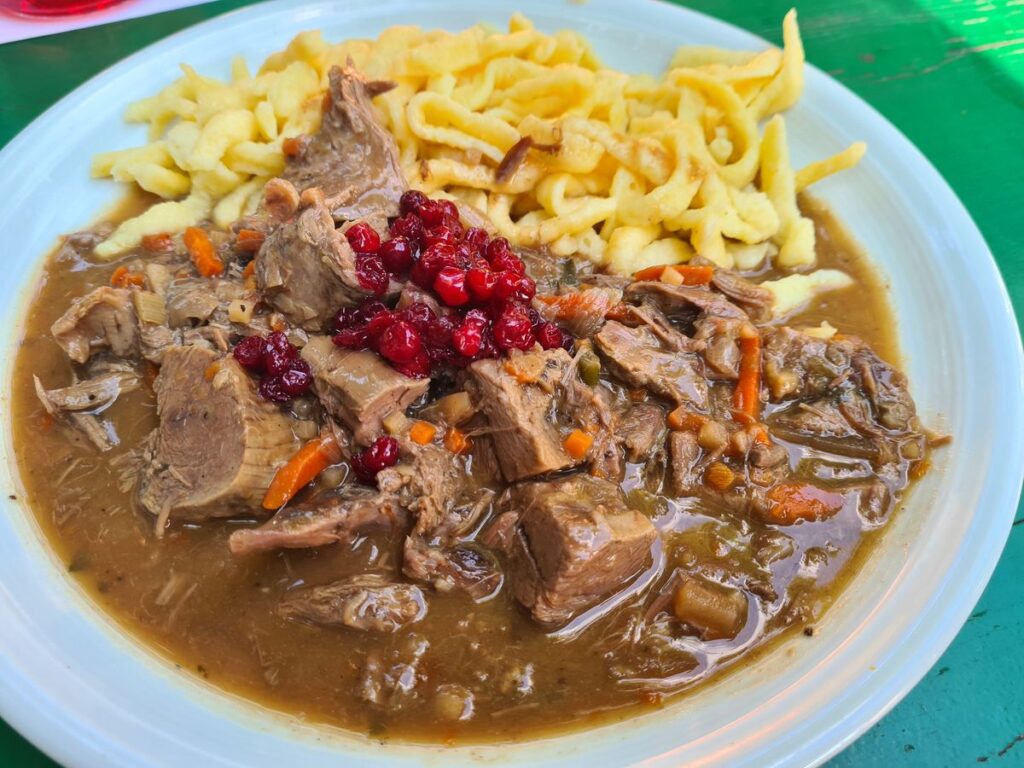
Native American tribes taught settlers to harvest wild rice from shallow waters, sharing knowledge that had sustained their communities for generations. This nutritious grain paired perfectly with venison bones simmered until they surrendered every trace of flavor. The rich broth cradled chunks of deer meat and whatever vegetables could be gathered, creating a meal that honored both the animal and those who hunted it.
The protein from venison, balanced with carbohydrates from rice, created an ideal meal for bodies working harder than modern gym equipment could ever demand. This cultural exchange produced enduring recipes that sustained communities through winters that tested every resource and relationship.
1. Campfire Beans

Cowboys relied on this hearty staple during cattle drives that stretched longer than your latest Netflix binge. Dried beans soaked overnight, then simmered over low coals, smoke weaving through each legume like a secret ingredient no modern chef could replicate. Salt pork added essential fat while molasses provided sweetness that balanced the earthiness.
On chilly nights, cowboys gathered around fires sharing tales over steaming bowls, their faces illuminated by flickering flames. Each spoonful delivered comfort and protein necessary to face another dawn in the saddle. This simple dish embodied the resourceful spirit that defined western expansion, making something extraordinary from almost nothing.


